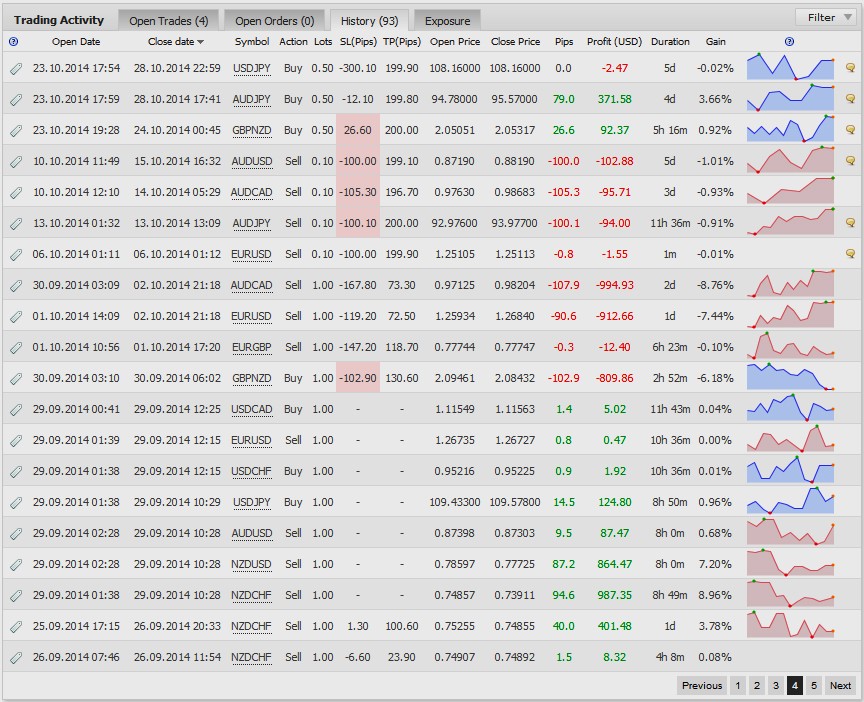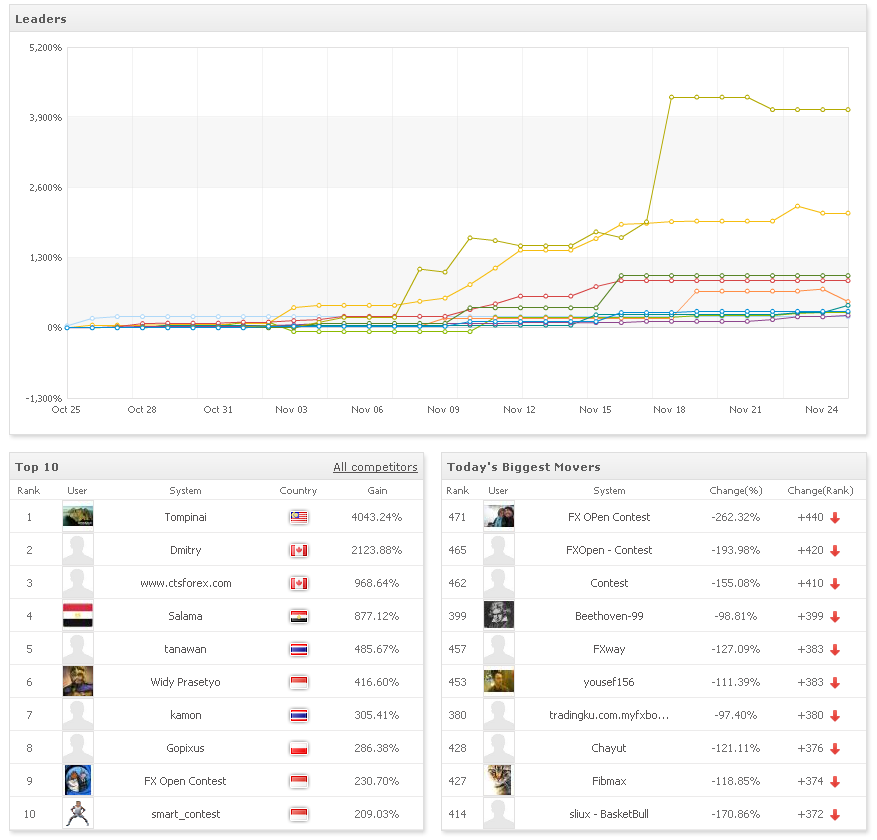Sharpe Ratio Highest in myfxbook Discussion Page 2
Post on: 8 Май, 2015 No Comment

Member Since Nov 27, 2010 244 posts Raiden Mar 31 2012 at 16:07 (edited Mar 31 2012 at 16:17 )
Before I go into a critique of the Sharpe Ratio as a measure, I’m compelled to correct some misunderstandings here.
OnTheEdge posted:
Although many comments seem to be dancing very close to the real problem with the Sharpe Ratio, In laymen terms it is not possible to use the Sharpe Ratio in the Forex market (even though it’s being used).
The Sharpe Ratio is simply the average of the risk-adjusted returns divided by their standard deviation.
We’ll be referring to Sharpe’s own writings on the matter.
www.stanford.edu/
wfsharpe/art/sr/sr.htm
It is supposed to allow comparison of the performance of funds, or trading accounts. It’s got nothing to do with the instruments the fund may be using.
OnTheEdge posted:
As most who have posted here may understand but I didn’t fully grasp, the Sharpe ratio has to be measured against a ‘Risk-FREE Rate OR the Rate of Interest one could get by INVESTING in a Risk-FREE bond such as a T-bill.’
Yes, this is Sharpe’s intention, to quote him here:
‘Whether measured ex ante or ex post, it is essential that the Sharpe Ratio be computed using the mean and standard deviation of a differential return (or, more broadly, the return on what will be termed a zero investment strategy).’
However, since it is used as a comparator, any common denominator is removable. In this case, the same risk-free rate being applied to all the returns.
OnTheEdge posted:
Furthermore, the Sharpe Ratio was designed to compare the performance of Mutual Funds. Clearly not the same as Forex.
Again, got nothing to do with the instrument.
OnTheEdge posted:
Consider reading the book, When Genius Failed by Roger Lowenstein, Shows just what can happen to a High Sharpe Ratio.
It is a performance comparator, it does not measure risk. It is little wonder that a high Sharpe Ratio fund can blow up.
OnTheEdge posted:
There is IMHO no such measure that can be used to evaluate Forex to any ‘Risk-Free Rate or Investment’.
Edit:

I thought it wise to point out why I don’t believe Sharpe works at least in Forex and when comparing a System or Money Manager. The primary reason is depending on where you live in the world your ‘Risk-Free Rate’ can vary wildly. In many countries 3 to 6% returns a year are easy to come by relatively Risk-Free, but if the Sharpe Ratio is based on a U.S asset than this skews the results toward a higher number, but less of a gain for someone living in say Australia. I’m not trading Forex for 6% or even 15% per year I’m looking for 20% or more because relative to my situation I can put it in the bank on 3, 6, or 12 month money market and earn 15% per year.
Again, it does not matter as long as the same risk-free rate is applied to all the accounts you are comparing.
I wouldn’t go into the discussion of ‘risk-free-ness’ of a T-bill/Government bond as I see there is sufficient fundamental confusion here already, but the take home is that you should look to deduct a rate of return that you otherwise would be fairly certain of getting. E.g. capital-guaranteed cash-deposit interest rate.
But as said above, since you are comparing apples to apples, you can just take out this common denominator that you would be applying across the board.
A little elaboration of how Sharpe Ratio is currently being calculated in myfxbook.
The returns are calculated from individual closed trades, and not the NAV of the account at a fixed routine rollover time. Read the entire ‘Time Dependence’ section in Sharpe’s writing. As trades have all different durations, the resultant myfxbook Sharpe Ratio number calculated is something else altogether.
And the issue facing myfxbook is that to calculate the NAV at a fixed rollover is not too straightforward, as MT4 statements are historical records of closed trades only. There will be some issue of back-calculating open trades during the rollover, particularly if there is no lookup of the price at the time. I believe the recent addition of the REXFO pricing might help in this. We’ll have to wait and see if it is to be updated or not.
Ok, now, let’s look at the Sharpe Ratio.
You are studying the average of the returns against their standard deviation. (The use of standard deviation to build some significance in the returns of a fund, itself, can be an essay. On its futility. In my opinion, it’s really meaningless.) Assuming the fund’s returns fall into a normal distribution, to yield a high Sharpe Ratio, you would want to have the average of the returns being higher than their standard dev.
And this is where I would like another quant to explain the significance to me. So what if it is higher? It doesn’t measure risk at all, and the average can be lower than the standard deviation for a much more profitable and stable fund. It’s like making the statement that a transport company’s trucks are in a deeper shade of blue than its competitor and eluding to its higher business performance.
Consistency above all.














